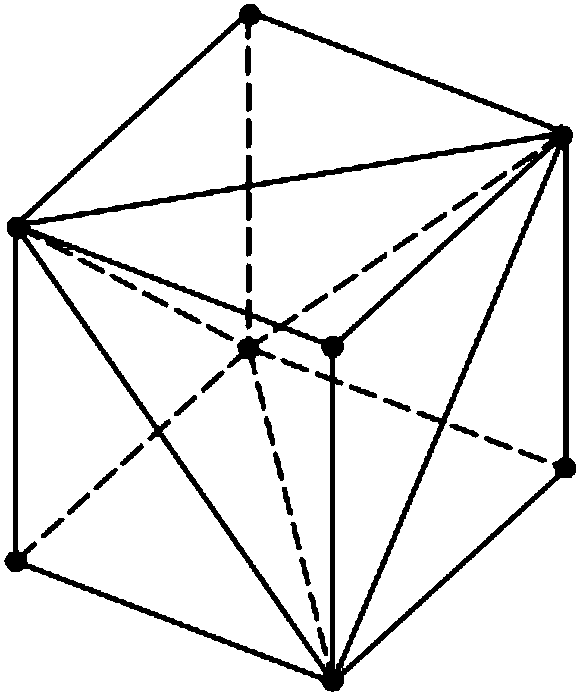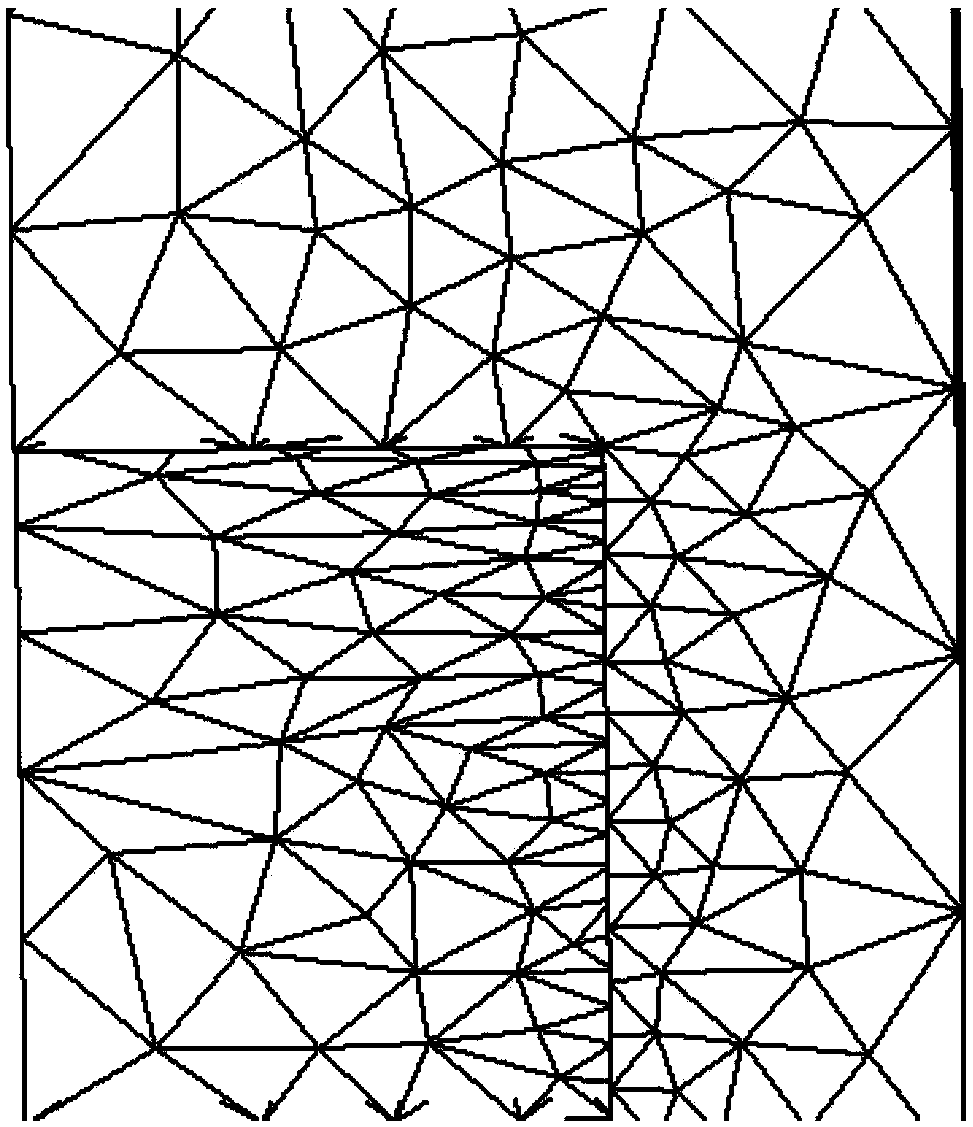Electric potential finite element solution algorithm applied to PIC electrostatic model
A finite element and potential technology, applied in the field of potential finite element solution algorithms, can solve problems such as poor boundary matching and low solution accuracy, and achieve the effects of optimizing spatial grids and time steps, high calculation accuracy, and simple calculation.
- Summary
- Abstract
- Description
- Claims
- Application Information
AI Technical Summary
Problems solved by technology
Method used
Image
Examples
Embodiment Construction
[0056] The present invention will be described in further detail below through the embodiments and the accompanying drawings.
[0057] Taking the ion thruster seven-hole double-grid ion optical system as an example, the schematic diagram is as follows image 3 shown. Adopt algorithm among the present invention to carry out the specific implementation steps of PIC electrostatic simulation to this example as follows:
[0058] Step 1. Potential solution: adopt FEM algorithm based on unstructured grid.
[0059] Solve the Possion equation for the potential to satisfy:
[0060]
[0061] In the formula, ρ is the charge density, ε 0 is the vacuum dielectric constant.
[0062] Transformed into an equivalent variational problem as:
[0063]
[0064] Since the Possion equation is being solved, α x = 1, α y = 1, α z = 1, β = 0, Then you can get:
[0065]
[0066] Then the three-dimensional calculation area volume V is discretized into M tetrahedrons, and the grid divis...
PUM
 Login to View More
Login to View More Abstract
Description
Claims
Application Information
 Login to View More
Login to View More - R&D
- Intellectual Property
- Life Sciences
- Materials
- Tech Scout
- Unparalleled Data Quality
- Higher Quality Content
- 60% Fewer Hallucinations
Browse by: Latest US Patents, China's latest patents, Technical Efficacy Thesaurus, Application Domain, Technology Topic, Popular Technical Reports.
© 2025 PatSnap. All rights reserved.Legal|Privacy policy|Modern Slavery Act Transparency Statement|Sitemap|About US| Contact US: help@patsnap.com



